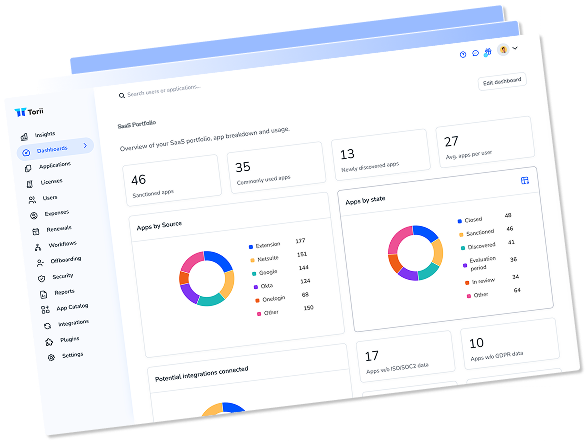Automation promises to simplify our work.
But it doesn’t. At least, not by default.
We surveyed the State of IT Automation and found that many IT leaders are disappointed. Only 13% rate their automation experience as “great.” That’s a low number for something meant to revolutionize IT. So, what’s going wrong?
In this article, we’ll explore why automation often underdelivers. By understanding common challenges, we can find solutions that make automation work as intended. Let’s dive into the obstacles holding us back.
The Hidden Obstacles in SaaS Automation
Our research asked why automation wasn’t working like it should. Respondents said:
- Educational Gaps: 64% of IT professionals need more training to use their automation tools. And education is a cost. Time is limited; if the tool takes too long to learn, it won’t get used.
- Time and Staffing Constraints: 58% face a time and staff shortage. Overworked teams can’t focus on setting up and maintaining automation.
- Poorly Designed Tools: 44% find automation tools inadequate or hard to use. Complicated interfaces and limited features make automation more trouble than it’s worth.
However, one of the biggest causes of poor automation experiences is SaaS sprawl and shadow IT. Unsanctioned apps are popping up everywhere, making management a nightmare. IT is responsible for apps they might not even know about. This uncontrolled growth complicates automation efforts and increases security risks.
Simply put, you can’t automate what you can’t see.
When shadow it dominates your tech stack, it hinders your ability to automate basic admin tasks.
- Onboarding
- Offboarding
- App Rationalization
- Contract Renewals
- Spend Management
- Security Assessments
- Compliance Audits
- Data Mapping
The list goes on.
So, now that we see the barriers, how can we improve our SaaS automation?
Discovery First: How SaaS Management Helps
Above all, the most crucial step towards automation is uncovering which apps are used within the organization. Think about it: whether you want to automate cost savings, employee lifecycles, app lifecycles, or renewal processes. You need to see your entire app landscape first.
Another way to think about it is like building blocks. Automation is all about building a structure that can repeatedly accomplish something. But, to create that structure, you need to understand what pieces you have. Without that initial centralization of your resources, management is impossible, which makes constructing long-term solutions equally impossible.
Centrally managed SaaS life cycles are now identified as top risks and opportunities, according to Gartner®.
According to the 2024 Gartner Magic Quadrant™ for SaaS Management Platforms:
- “Through 2027, organizations that fail to centrally manage SaaS life cycles will remain five times more susceptible to a cyber incident or data loss due to incomplete visibility into SaaS usage and configuration.”
- “Through 2027, organizations that fail to attain centralized visibility and coordinate SaaS life cycles will overspend on SaaS by at least 25% due to unused entitlements and unnecessary, overlapping tools.”
- “Through 2027, over 50% of organizations will centralize SaaS application management using an SMP, an increase from less than 10% in 2024.”
Get a complimentary copy of the report today.
SaaS Management is critical not just to automation but also to the sustainability of your organization.
Rethinking Automation in Light of SaaS Management
Now we know that the issues that undermine our automation efforts are a lack of visibility into shadow IT, poorly designed tools, lack of education, and limits on time or staff. So, to overcome these challenges, we get a clear picture of the kind of solution we need.
1. Discovery
Whether integrated into your automation platform or through a separate tool, you need to know which apps you have to bring automation to all your critical use cases. A SaaS Management Platform like Torii discovers all your applications through multiple sources. You’ll also see usage rates and trends. If you’re struggling with visibility, learn how Torii can help.
2. Integrations with Key Apps
Integrations are the backbone of effective automation. Connecting with systems like Single Sign-On (SSO), Identity Providers (IDP), Human Resources Information Systems (HRIS), ticketing systems, and communication tools like Slack or email is crucial. These integrations allow for seamless data flow and automation across your digital workspace. Make sure you can verify which apps integrate with your core tech stack.
3. Security Certifications
Ensure the automation system is designed with your security in mind. They should comply with relevant regulations since they will have access to sensitive apps and data. Look for platforms that have certifications like SOC 2, ISO 27001, or compliance with GDPR to ensure they meet stringent security standards.
4. Easy-to-Use Interface
An intuitive user interface can mean the difference between success and failure. Tools that “just make sense” reduce the learning curve and encourage adoption among your team. Drag-and-drop builders, clear dashboards, and straightforward navigation are vital features to look for.
5. Ready-Made Templates
Automation templates help you start quickly by providing inspiration and a solid understanding of the tool’s capabilities. Templates for standard processes like onboarding, offboarding, and license management can save time and ensure best practices are followed.
6. Quick Wins
Choose a tool that can deliver quick wins with teams or leadership with influence. Examples include:
- Cost Savings: Identify and eliminate unused licenses or redundant applications.
- Contract Management: Streamline renewal processes and negotiate better terms.
- Security and Compliance: Reduce risks by managing shadow IT and ensuring compliance with regulations.
Real-World Success Stories
To illustrate how effective SaaS management can transform automation efforts, let’s look at some real-world examples:
Gorillas Saves Hundreds of Thousands and Over 1,000 Hours with Torii
Gorillas dealt with unmanaged SaaS apps and manual onboarding/offboarding, with HR spending 10-20 minutes per employee. Help desk tickets surged to 14,000. After implementing Torii, they discovered over 180 apps and saved over 1,000 hours by automating onboarding and offboarding. They eliminated software-related help desk tickets. Torii’s license management identified unused licenses, saving thousands of euros monthly and reducing license costs by hundreds of thousands in the first year. The IT team saved 200+ hours on license management, enabling efficient support for rapid growth.
sennder Cuts Onboarding Time by 70% and Saves €30,000 with Torii
sennder faced manual SaaS management challenges, spending 2-4 days monthly on onboarding and uncovering over 100 unsanctioned apps. With Torii, they reduced onboarding time by 70% using automated workflows and integrations. Offboarding became automated, enhancing security. Torii’s license management saved €30,000 by optimizing Zoom licenses, and the chargeback feature saved tens of hours monthly in expense allocation. Torii provided complete SaaS visibility, improved security, and significant cost savings.
Productboard Saves 2,000 Hours Annually with Torii
Productboard struggled with manual SaaS management and shadow IT, spending 1.5 hours per hire on onboarding and lacking visibility into over 400 apps—discovering 5-10 shadow IT apps monthly. Implementing Torii’s SaaS Management Platform, they automated onboarding to zero manual clicks, saving 2,000 hours annually. Torii’s Application Catalog improved transparency, and the finance team optimized costs using Torii’s insights. The IT team now focuses on strategic work, enhancing operations and security.
Better SaaS Management Means Better Automation
Automation can potentially revolutionize IT operations, but only if implemented effectively. The key to unlocking this potential lies in better SaaS management. That’s why SaaS Management is no longer an option. You can overcome the barriers that have hindered automation efforts by gaining visibility into your entire SaaS ecosystem and leveraging tools designed to integrate, secure, and streamline your applications.
Investing in a robust SaaS Management Platform like Torii empowers your organization to:
- Automate with Confidence: Knowing you have a complete picture of your SaaS landscape.
- Improve Efficiency: Automate routine tasks and focus on strategic initiatives.
- Enhance Security: Mitigate risks associated with shadow IT and ensure compliance.
- Optimize Costs: Eliminate wasteful spending on unused or redundant applications.
Don’t let poor automation experiences hold your organization back. By rethinking automation in light of SaaS management, you can turn a source of frustration into a competitive advantage.
Ready to Transform Your Automation Experience? Discover how Torii can help you streamline your SaaS management and unlock the full potential of automation. Learn more or request a demo today.

